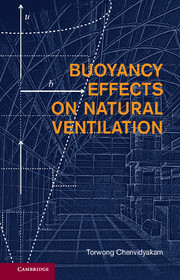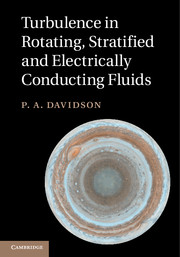3654 results in ebooks in fluid mechanics
Preface
-
- Book:
- Turbulence in Rotating, Stratified and Electrically Conducting Fluids
- Published online:
- 05 September 2013
- Print publication:
- 12 September 2013, pp xv-xviii
-
- Chapter
- Export citation
Turbulence in Rotating, Stratified and Electrically Conducting Fluids - Half title page
-
- Book:
- Turbulence in Rotating, Stratified and Electrically Conducting Fluids
- Published online:
- 05 September 2013
- Print publication:
- 12 September 2013, pp ii-ii
-
- Chapter
- Export citation

Buoyancy Effects on Natural Ventilation
-
- Published online:
- 05 September 2013
- Print publication:
- 02 September 2013

Turbulence in Rotating, Stratified and Electrically Conducting Fluids
-
- Published online:
- 05 September 2013
- Print publication:
- 12 September 2013
1 - Introduction
-
- Book:
- Buoyancy Effects on Natural Ventilation
- Published online:
- 05 September 2013
- Print publication:
- 02 September 2013, pp 1-17
-
- Chapter
- Export citation
Contents
-
- Book:
- Buoyancy Effects on Natural Ventilation
- Published online:
- 05 September 2013
- Print publication:
- 02 September 2013, pp v-viii
-
- Chapter
- Export citation
Final remarks
-
- Book:
- Buoyancy Effects on Natural Ventilation
- Published online:
- 05 September 2013
- Print publication:
- 02 September 2013, pp 247-248
-
- Chapter
- Export citation
2 - Some preliminaries
-
- Book:
- Buoyancy Effects on Natural Ventilation
- Published online:
- 05 September 2013
- Print publication:
- 02 September 2013, pp 18-33
-
- Chapter
- Export citation
Buoyancy Effects on Natural Ventilation - Title page
-
-
- Book:
- Buoyancy Effects on Natural Ventilation
- Published online:
- 05 September 2013
- Print publication:
- 02 September 2013, pp iii-iii
-
- Chapter
- Export citation
Copyright page
-
- Book:
- Buoyancy Effects on Natural Ventilation
- Published online:
- 05 September 2013
- Print publication:
- 02 September 2013, pp iv-iv
-
- Chapter
- Export citation
4 - Sources of opposite sign
-
- Book:
- Buoyancy Effects on Natural Ventilation
- Published online:
- 05 September 2013
- Print publication:
- 02 September 2013, pp 126-189
-
- Chapter
- Export citation
5 - Some common flow complications arising from more complex geometries
-
- Book:
- Buoyancy Effects on Natural Ventilation
- Published online:
- 05 September 2013
- Print publication:
- 02 September 2013, pp 190-246
-
- Chapter
- Export citation
Acknowledgements
-
- Book:
- Buoyancy Effects on Natural Ventilation
- Published online:
- 05 September 2013
- Print publication:
- 02 September 2013, pp xv-xvi
-
- Chapter
- Export citation
Buoyancy Effects on Natural Ventilation - Half title page
-
- Book:
- Buoyancy Effects on Natural Ventilation
- Published online:
- 05 September 2013
- Print publication:
- 02 September 2013, pp i-ii
-
- Chapter
- Export citation
Preface
-
-
- Book:
- Buoyancy Effects on Natural Ventilation
- Published online:
- 05 September 2013
- Print publication:
- 02 September 2013, pp ix-xiv
-
- Chapter
- Export citation
References
-
- Book:
- Buoyancy Effects on Natural Ventilation
- Published online:
- 05 September 2013
- Print publication:
- 02 September 2013, pp 249-256
-
- Chapter
- Export citation
Index
-
- Book:
- Buoyancy Effects on Natural Ventilation
- Published online:
- 05 September 2013
- Print publication:
- 02 September 2013, pp 257-260
-
- Chapter
- Export citation
3 - Sources of identical sign
-
- Book:
- Buoyancy Effects on Natural Ventilation
- Published online:
- 05 September 2013
- Print publication:
- 02 September 2013, pp 34-125
-
- Chapter
- Export citation
7 - Immersed granular media
-
- Book:
- Granular Media
- Published online:
- 05 June 2013
- Print publication:
- 13 June 2013, pp 285-310
-
- Chapter
- Export citation
3 - The granular solid: statics and elasticity
-
- Book:
- Granular Media
- Published online:
- 05 June 2013
- Print publication:
- 13 June 2013, pp 59-121
-
- Chapter
- Export citation
